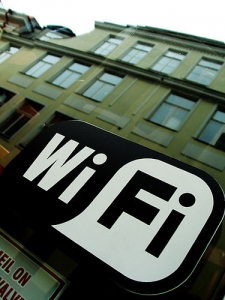Whether you deal with selling items or services online or in a store, there are risks when it comes to your customer’s personal information. Even the POS cash register systems that many retail chains use are subject to hackers since they work over the internet, and without the proper protection these hackers can walk away with more than just people’s credit card numbers.
As you can see, there are many levels at which a business needs to work to protect their customers and their information. So, how do you do it? [Read more…]

 I didn’t realize that there are still a lot of people who do not really pay attention to securing their WiFi at home. I guess that I have always taken it for granted that once you set up any connection for home use, you install passwords and other measures to protect it. Apparently, in this day and age, not everyone has the same idea.
I didn’t realize that there are still a lot of people who do not really pay attention to securing their WiFi at home. I guess that I have always taken it for granted that once you set up any connection for home use, you install passwords and other measures to protect it. Apparently, in this day and age, not everyone has the same idea. The average person spends a lot of time and money on making sure that his personal laptop or desktop computer is secure. From firewalls to anti-virus software to spyware removers – all these kinds of software are installed onto computers to make sure that any kind of malware is kept out. But do you pay as much attention to security on your mobile phone?
The average person spends a lot of time and money on making sure that his personal laptop or desktop computer is secure. From firewalls to anti-virus software to spyware removers – all these kinds of software are installed onto computers to make sure that any kind of malware is kept out. But do you pay as much attention to security on your mobile phone?  So you’re convinced that you have to secure your WiFi. Good, now we can make some progress. In the previous post, I mentioned using a password. This is the first step is making sure that unauthorized users will not be able to connect easily.
So you’re convinced that you have to secure your WiFi. Good, now we can make some progress. In the previous post, I mentioned using a password. This is the first step is making sure that unauthorized users will not be able to connect easily.